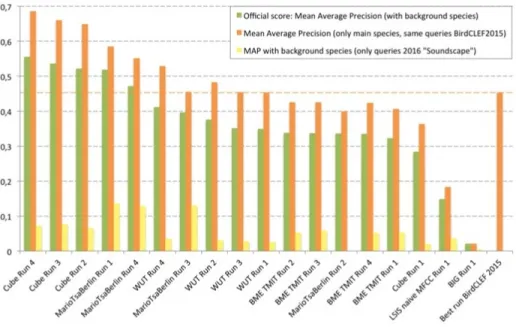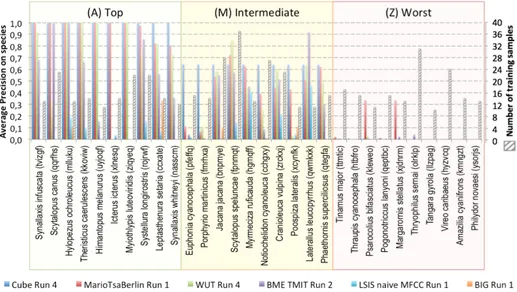LifeCLEF Bird Identification Task 2016: The arrival of Deep learning
Texte intégral
Figure



Documents relatifs
Our approach of training a combined semantic and syntactic sentence embedding performs better, and the lowest MAP score is increased from around 0.04 to 0.105 on the
Then, we de- velop additional multi-scale Convolutional Neural Networks (CNNs) with different kernel sizes that learn from external sources whether a claim is true, false, half-true
The main novelty of the 2017 edi- tion of BirdCLEF was the inclusion of soundscape recordings containing time-coded bird species annotations in addition to the usual
The LifeCLEF bird identification challenge provides a large- scale testbed for the system-oriented evaluation of bird species identifi- cation based on audio recordings.. One of
As training data, in addition to the data of the previous PlantCLEF challenge [3], we provided two new large data sets both based on the same list of 10,000 plant species (living
Pour étudier les propriétés de la sensibilité à l'humidité des capteurs à base de ZnO pure où les couches sont préparées par les deux méthodes (dip et spin coating), nous avons
In this paper, we propose a methodology to detect the topology of a dynamic network that is based on the analysis of the uncertainty of an estimate of the static characteristic of
In the aim to evaluate more precisely the capacities of state-of-the-art plant identi- fication systems compared to human expertise, we did set up a new evaluation with (i) a